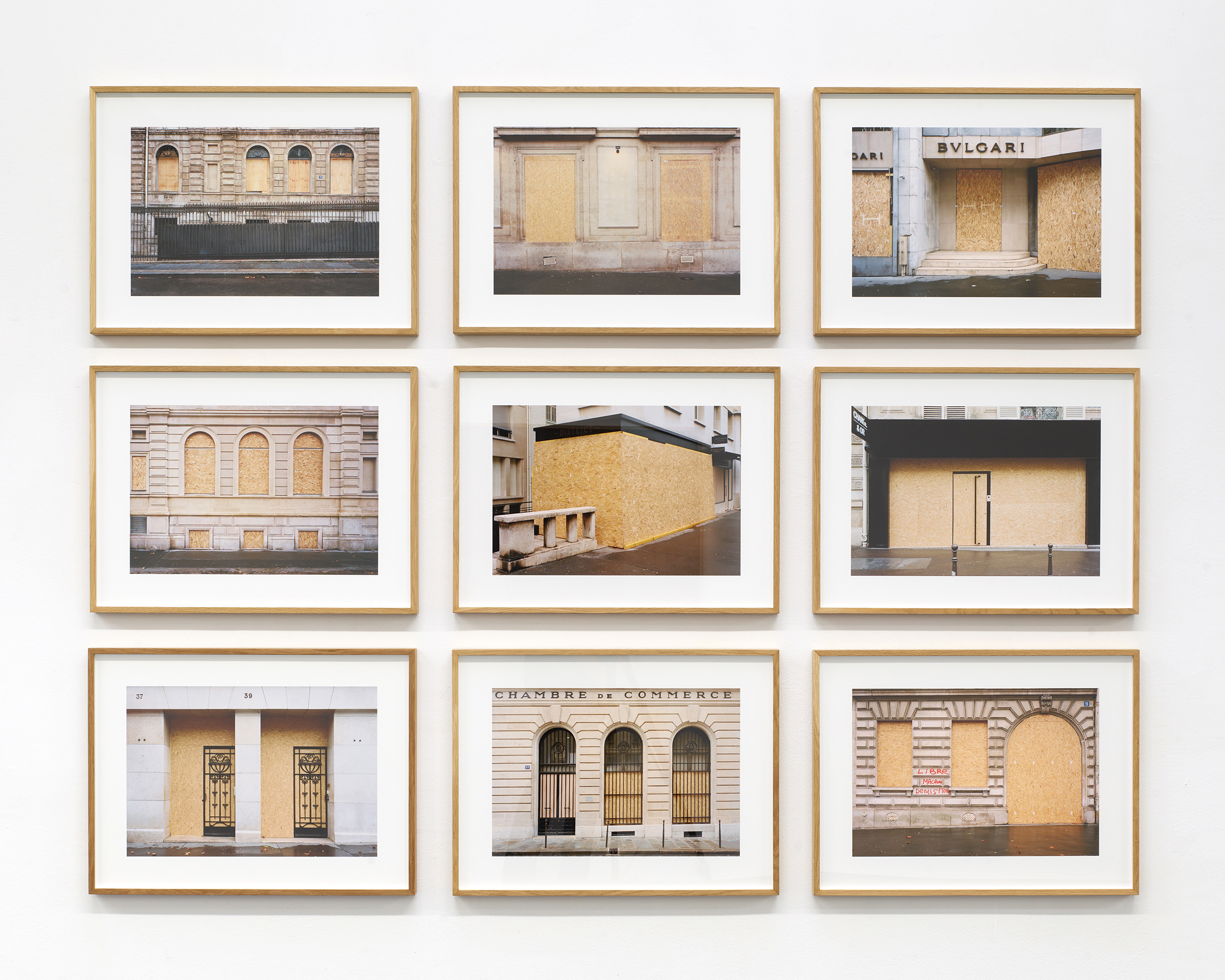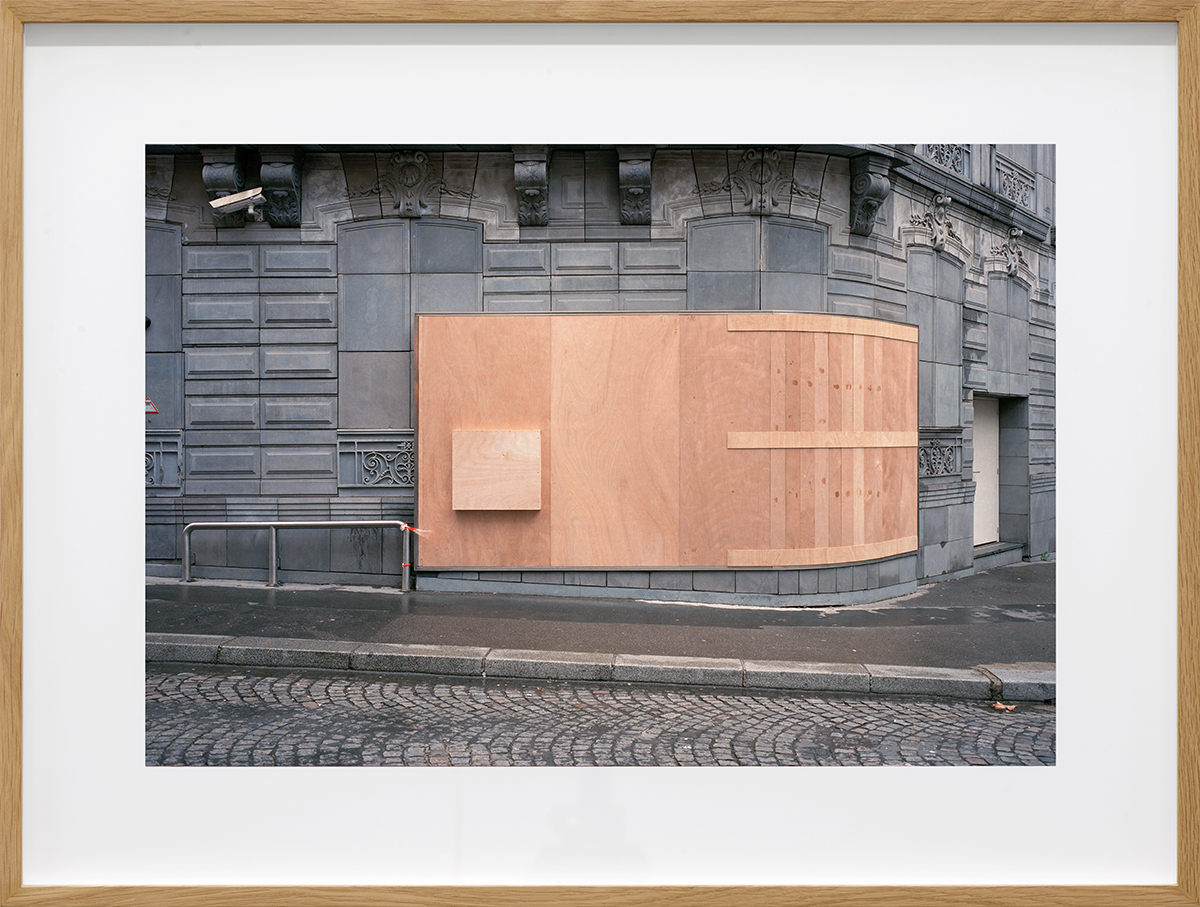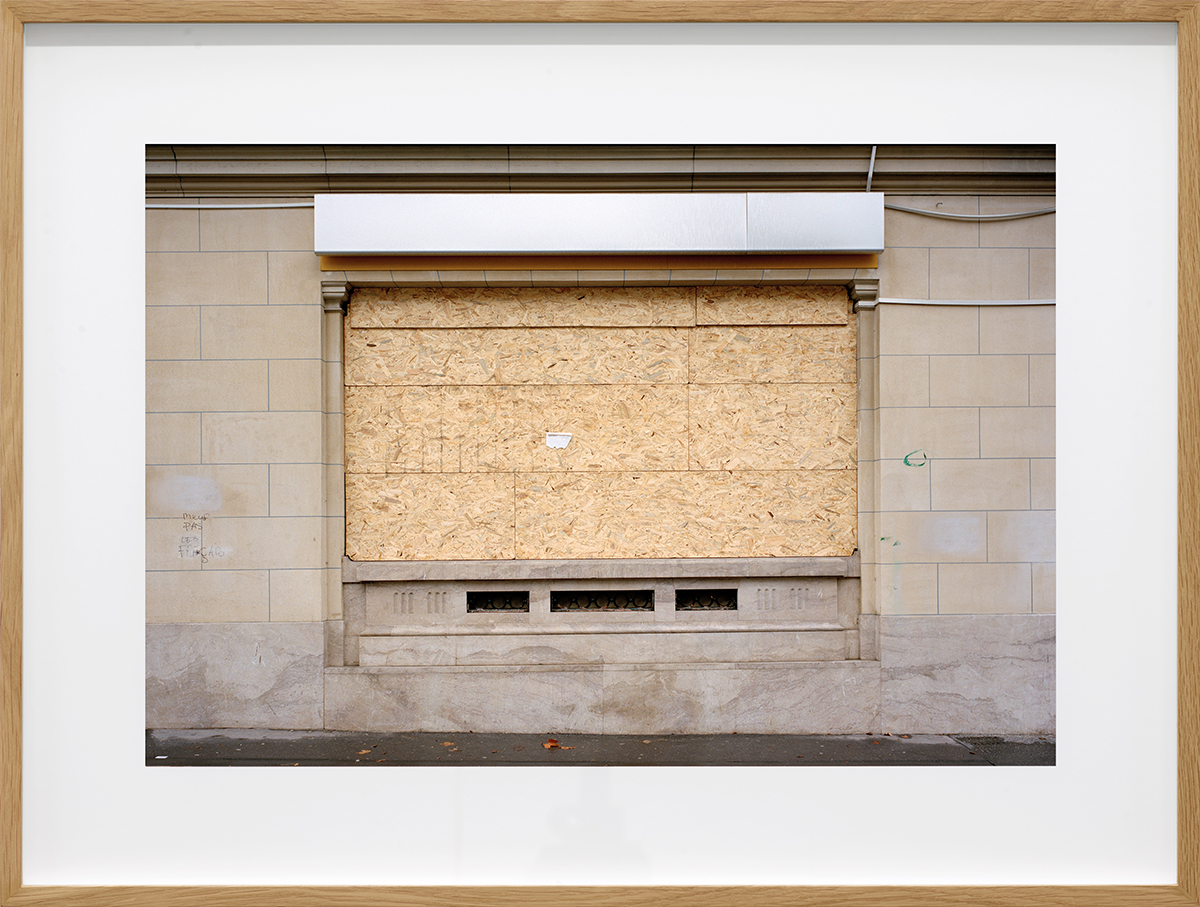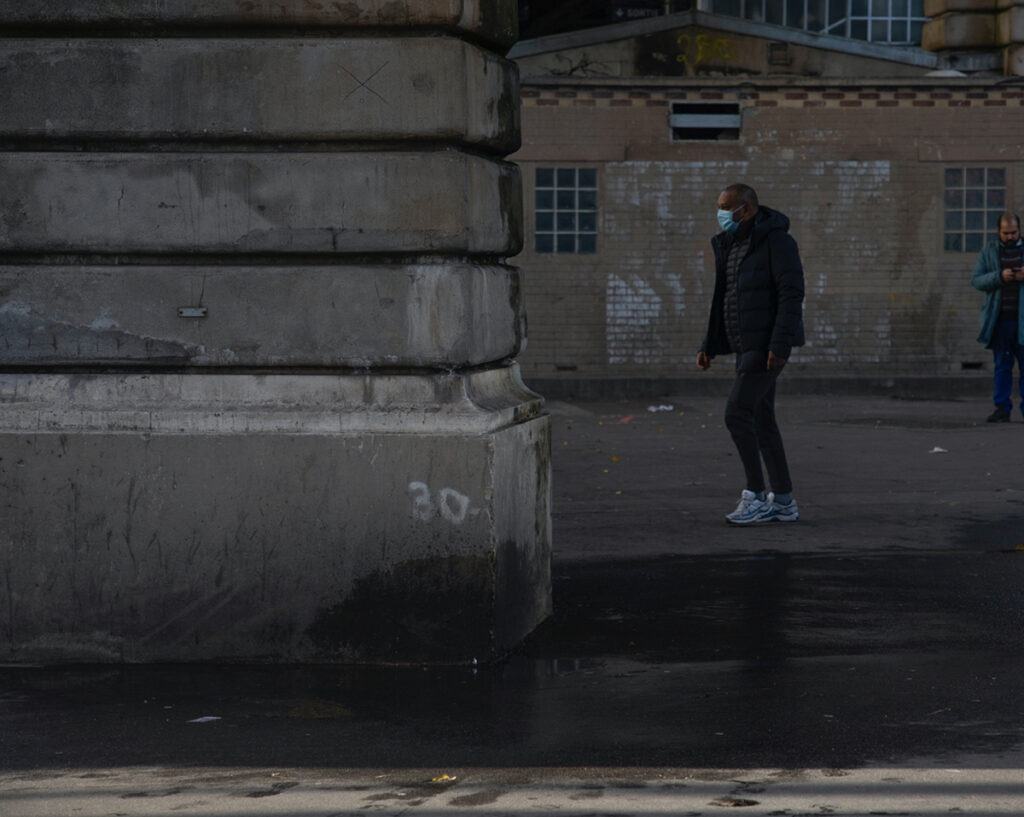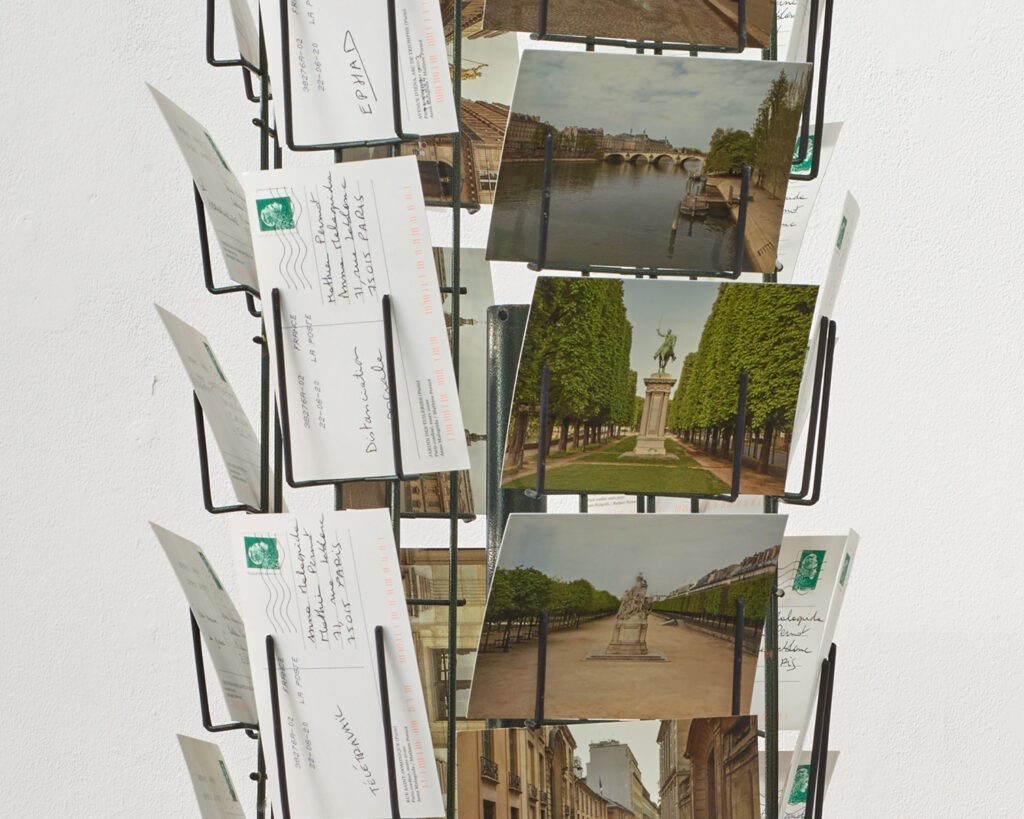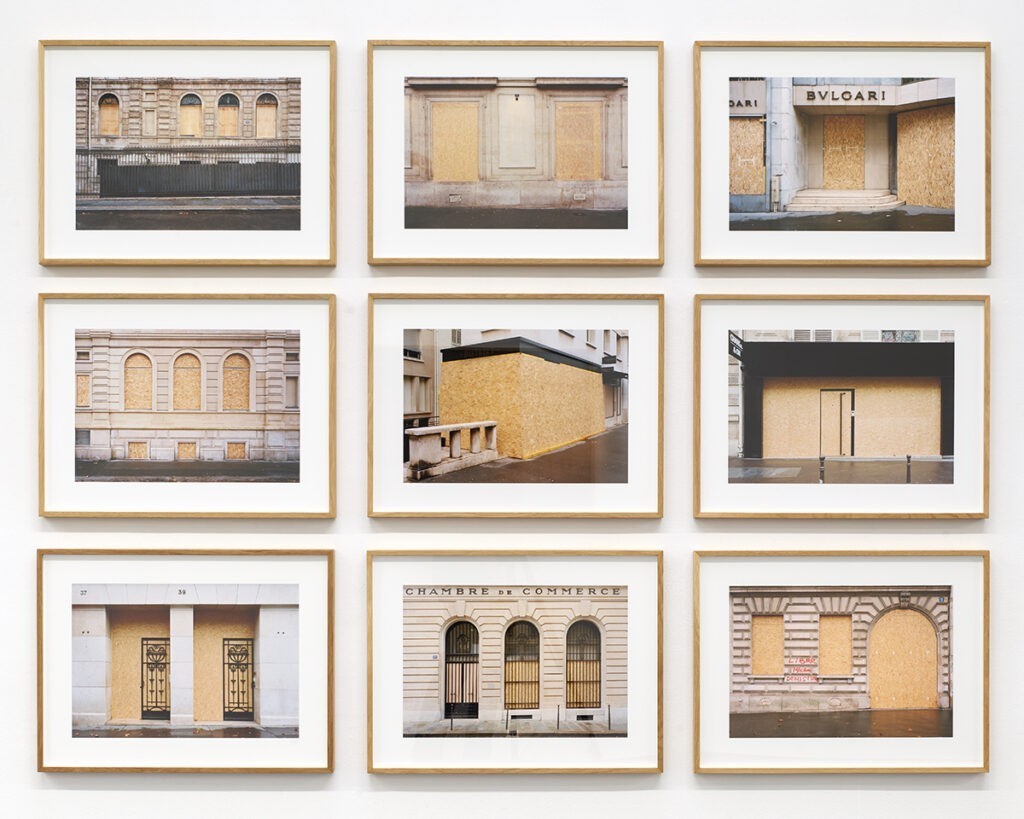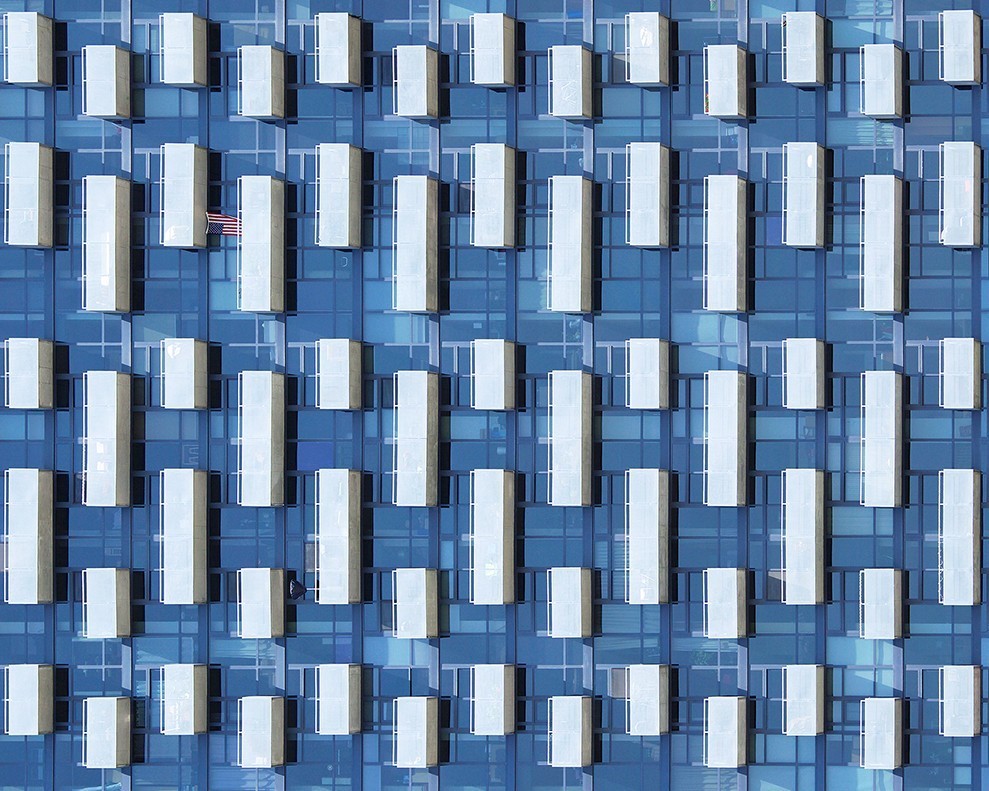Anna Malagrida
with Mathieu Pernot
Paris barricadé
The series Paris barricadé consists of photographs of shop windows from the center of Paris, namely the area around the Étoile and the Champs Elysées, which have been boarded up with plywood by residents and shopkeepers to protect them from the often violent protests of the Yellow Vests, which have regularly taken place on Saturdays since 2018. The day after the demonstrations, Malagrida and her life partner, photographer Mathieu Pernot, went to the area of the street battles. Here, the artist couple’s experience of reality is strikingly different from the scenarios of Paris going up in flames that have been spread via social media. Everywhere, there was not so much a Sunday-like calm as a ghostly calm. This disproportion between the catastrophe spread by the media and the silence on site reflects a social imbalance that fuels rebellious tendencies through heated moods.
The panels are inserted without gaps into window and door openings of the elegant buildings, sometimes porches surround a stately entrance area. Malagrida’s series of single images soberly shows typological variations of the motif – taken from a frontal perspective and under unchanging conditions. The improvised, temporary interventions, which stand out from the solid masonry, are adapted to the well-kept standard of the buildings and the affluent neighborhoods. Going beyond the purely documentary character of the shots, the frequent repetition lends these elements in their multiple forms an independent pictorial value that follows a minimalist aesthetic and also alludes – not least through the consideration of color values – to the contrasting relationship between figure and ground. In their almost exact formal correspondence to the vulnerable parts of the building, the carefully fitted panels depict them in a symbolically reduced form – like cut-outs – in a quasi-representative manner. The preventive precautions thus designate zones of permeability and potential attack surfaces, but are in turn, through the offensive defensive posture inscribed in them, unmistakable, even provocative signs of aggressively charged fear.
Concise in form and content, Malagrida’s images have an extremely strong effect. Not only do the sealed buildings refer to a cityscape in a state of emergency. Rather, they assert themselves as symbols that metaphorically illuminate the theme of visibility, accessibility, and ultimately, on a sociocritical level, belonging.
The wooden panels embody above all the reinforced border between outside and inside, between public and private space, between the common good and individual prosperity, where the contrast between social groups, but also the existential duality between one’s own and the other is played out: The sharp juxtaposition between exclusive clientele and less affluent populations is ultimately mirrored in the shop window of the luxury boutiques themselves. The reinforcement by the constructed wooden panels thus underpins the symbolic power of the display windows as clear dividing lines, as evidence of a division, where differences are formed and margins emerge, from which the excluded and disadvantaged ultimately organize themselves into protest groups, which are then perceived as a threat. In the field of tension between socio-politically charged, opposing points of view, Malagrida subtly poses the question of perspective in order to relativize the narrow classification of perpetrator and victim, the clear distinction between attack and defense: The positioning in front of or behind the barricade determines the perspective and the adopted one-sided view (excluding the others in each case) from which images of the enemy emerge.
During the spread of Corona, the mouth-nose protection became an attribute of the individual in face of a health threat and acquired importance as a universal sign of a new pandemic reality. A reality that – similar to the covered shop windows in Paris barricadé – is characterized by a defensive posture adopted to protect against an external threat – whether it is the attack by a militant civil movement or a virus.
Anna Malagrida (*1970 in Barcelona, lives and works in Paris), who has been working as an artist since the late 1990s, first studied communication at the Universidad Autónoma de Barcelona (graduated in 1993) and then she obtained a diploma at the École Nationale Supérieure de Photographie in Arles (1996). She is the winner of the Prix au Projet des Rencontres internationales de la Photographie (2005), had a scholarship from the Fundación Arte y Derecho (2006) and in 2016 she has been honored with the Carte Blanche PMU prize, which was tied to an exhibition at the Centre Pompidou. Since 2020, she is part of a program of the French Centre national des arts plastiques and the Jeu de Paume in which new photographs are commissioned (Commande Image 3.0).
Malagrida’s works (videos and especially photographs) are characterized by her great interest in social and political contexts. She combines formal quality, media-conceptual considerations, and art-historical references (the flatness of the photographic image, the relationship between painting and photography, the view through the window that has become topical since Leon Battista Alberti, the chiaro-scuro lighting conditions since Caravaggio) with a great empathy for humans. Thus, Malagrida’s photographs deal with questions of cultural identity, the boundaries between the private and the public, and the relationships of authority and power in our contemporary societies. While her works are often prompted by current events, they in fact discuss issues that go beyond the current day.
